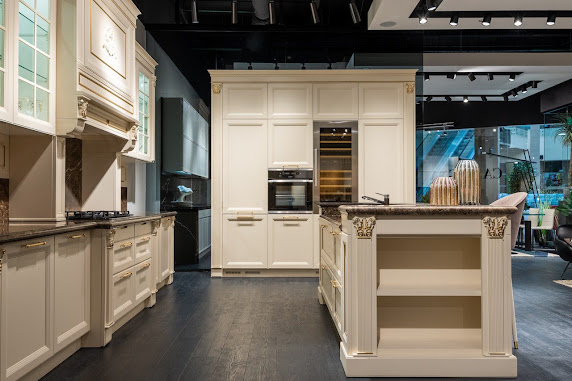From Classic to Contemporary: Adapting Traditional Italian Kitchen Styles to a Modern Setting
Are you a décor connoisseur who would love the idea of having a kitchen that seems frozen in time amidst the rolling Hills of Tuscany? Well, if the answer is yes, traditional Italian kitchens with a hint of modernism can be your ultimate inspiration. Italian kitchens are like a dream come true for every interior enthusiast. Why? Because they embody the essence of terracotta tiles carrying whispered stories of the past generations, the scent of simmering sauces lingering in the air, and stunning yet simple aesthetics.
If you want a simple yet timeless traditional Italian kitchen in your home, it’s excellent! However, if you want to pair the archaic charm with the demands of the present and create a luxury modern Italian kitchen, this guide is for you!
Keeping the Tradition Alive with a Modern Setting
- The Rustic Charm: Italian kitchens have a trademark of rustic allure in their décor. Warm terracotta tiles, reclaimed wood, and open shelving create a cozy, lived-in atmosphere. A key element in Italian kitchens is the use of natural materials, including stone and wood, evoking a sense of earthiness and authenticity. To adapt this style to a modern setting, consider integrating these elements in a more streamlined manner.
- Timeless Elegance of Tuscan Accents: Tuscan kitchens are celebrated for their timeless elegance. Earthy tones, textured walls, and wrought-iron accents define this style. To modernize this look, consider incorporating these elements in moderation, and use a neutral palette as a base, add pops of color through accessories or artwork. In addition, wrought-iron light fixtures or hardware can add a touch of tradition without overwhelming the space, infusing the kitchen with a subtle, classic appeal.
- Italian Modernism: Italian modernism, born out of the post-war era, is known for its emphasis on functionality and simplicity, and this style emphasizes clean lines, minimal ornamentation, and a focus on practicality. To adapt this style to a modern kitchen, leverage its functional aspects by incorporating high-quality, streamlined appliances and sleek cabinetry. Amalgamate this with conventional elements like mosaic backsplashes and marble countertops to stay connected with the Italian heritage with a modern flair.
- Blending Classic and Contemporary: The secret to a successful fusion lies in harmonizing classic elements with contemporary design. Mix traditional materials like marble and wood with modern touches, such as stainless steel appliances or industrial-style lighting. This fusion creates a striking contrast that highlights the best of both worlds, giving the kitchen a unique character.
You may also like to read:
- A Guide to Italian Kitchen Styles
- How Italian Kitchen Design Can Transform Your NYC Home?
- Italian-Inspired Kitchen Accessories for NYC Homes
Conclusion
Adapting traditional Italian kitchen styles to a contemporary setting is a delicate art that requires mastery in craftsmanship. Whether you are searching for simple storage options like a kitchen cabinet, or you need custom furnishings for your luxury modern Italian kitchen design, expertise of both historical elements and contemporary design principles is indispensable. Looking for professionals who can blend classic features with modern innovations to create a kitchen that pays homage to Italian heritage and looks uber cool? Stosa Cucine NYC is your one-stop destination to get started!
Source: https://stosa-ny.com/blog/classic-to-contemporary-italian-kitchen-styles/




Comments
Post a Comment